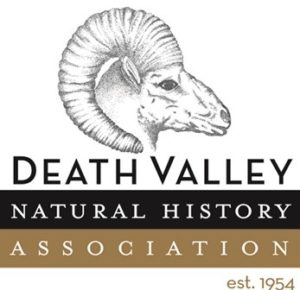Volunteers Make a Difference with Help From the Wilderness Restoration Fund
Around 220 volunteers come to Death Valley National Park each year. Some are in the park for a weekend; others work for six months or more. Together they donate approximately 40,000 hours, which is the equivalent of nineteen full-time employees and an impressive contribution to the park. Of these volunteers, approximately forty-five keen and hardy souls head for Death Valley’s backcountry. One or two individuals may also intern for the winter season with Charlie Callagan, Death Valley National Park’s Wilderness Coordinator and most of this work involves backcountry and wilderness restoration.
Volunteers can be involved in a myriad of different projects ranging from tasks requiring a few hours to repeat site visits by many different crews. A few examples of projects that volunteers have assisted with since 2008 are: fence removal to allow wildlife access to springs, clean-up of non-historic (1970 to early 1990’s) airplane crash sites, invasive species eradication, plant surveys in the Eureka Valley, restoration and maintenance of popular hiking trails, removal of illegal fire rings, picking up garbage from roadsides, removing graffiti, raking out vehicle tracks left by visitors who succumbed to an urgent desire to leave their mark and many, many more.
One of the most challenging tasks which many volunteer groups have participated in has been the recovery of debris from military airplane crashes. Callagan explains, “The needs and circumstances of this park are unique because we are surrounded by military bases and military training. Over the years there have been approximately twenty aircraft accidents within park boundaries. This is not a huge number, but significant. Every plane debris site has a big impact. I was quite taken aback when I discovered how much was left behind.”
To date, volunteers have removed over ten tons of debris from many different areas in the park. As much as possible has been recycled-especially the metal that came from the airplane crash sites. Money received in payment for recycling is put right back into the Wilderness Program to fund other projects.
Cheryl Chipman, Death Valley National Park’s Volunteer Coordinator, had this to say: “It is astonishing how much work is accomplished. The volunteers are so generous with their time.” There is no doubt that the volunteers provide an invaluable service to the park. Many of the projects they are involved in are wilderness restoration projects that would not be done otherwise. The park simply does not have the staff or funds to do so. But not only the park’s backcountry and wilderness areas benefit. The volunteers themselves derive greater benefits than many of them had expected.
Volunteers, such as the AmeriCorps crews who come into the park for six weeks at a time, are astonished at what they see here. Many of the young people ranging in age from 18 to 24, have never been west of the Mississippi, nor have they had any experience with camping. Their expectation of desert was something along the lines of “vast expanses of sand and nothingness.” Samuel, a twenty-two years old born and raised in Chicago said that this experience, “has opened [his] mind.” He loved the whole experience and has decided to pursue a career involving outdoor work. Another crew member, Chris, commented, “What AmeriCorps has shown me, is that I am very capable of overcoming challenges.” Others mentioned learning to take responsibility, develop a work ethic and self-discipline, and expressed their appreciation of personal growth. Quite a few of the young people decided that they would like to pursue a career in the Park Service or similar agency.
Somewhat older volunteers also spoke of personal benefits, but from a different perspective. To them the “giving back to the land” is of prime importance. Nathan Krumm summed it up this way, “My primary motivation is that I believe passionately in our public lands and appreciate giving back so that other people can enjoy them too.” Dean Wadsworth added, “If nobody takes care, then what? Most of California has been so heavily impacted by humans that it is getting pretty depressing, but the desert is not so trammeled.”
Death Valley Natural History Association donors who donate to the Wilderness Fund are making a significant contribution to the efforts of these most dedicated volunteers. Wilderness interns who work for a season receive a stipend. Without the Wilderness Fund there would be no money available for this small token of our appreciation for their efforts. These interns assist Charlie with the crews, surveying airplane crash sites, and independently completing smaller wilderness restoration clean-ups. These contributions are also used to pay for tools and supplies.
When everyone contributes even a little bit of money and/or time and effort, it adds up to a significant impact in restoring wilderness to be enjoyed and appreciated by many generations to come!
